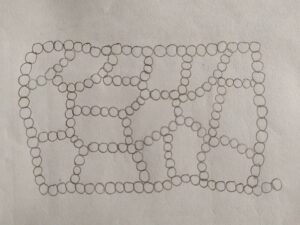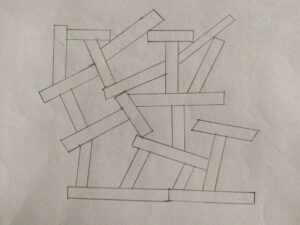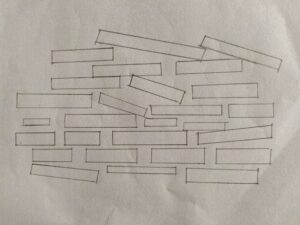The soil structure can be described as the proper geometrical positioning of soil particles with respect to each other.
Soil structure is one of the main parameters which affects many different soil properties like permeability, shear strength and compressibility etc. Majorly there are 6 types of soil structures which are generally considered.
Types of Soil Structure
There are generally 6 types of soil structure which are considered in geotechnical engineering.
- Honeycomb Soil Structure
- Single Grained Soil Structure
- Flocculent Soil Structure
- Dispersed Soil Structure
- Coarse Grained Skeleton Soil Structure
- Clay Matrix Soil Structure
Honeycomb Soil Structure
Normally, Honeycomb soil structure is majorly observed in particles of soil having diameter from 0.02 mm to 0.002 mm which are normally fine sands or silts.
Gravitational force and surface force play an important role in making honeycomb soil structure. Settling of soil particles at contact areas takes place because of these forces.

The particles of soil hold together and create mini arches which are then relatively connected by large void spaces which are known as honeycomb structures. Honeycomb soil structure has high void content as large water content is enclosed in it.
Single Grained Soil Structure
Single grained soil structure is found in coarse particle soil like gravel, sand etc. Settling of soil particles takes place individually as because of out of suspension.

In single grained soil structure, the specific surface of soil particles is less as well as all effective surface forces are also less.
Flocculent Soil Structure
Flocculent soil structure is found in fine grained soil such as clay. Flocculent soil structures are created because of the electrical forces between adjoining soil particles at the deposition time that being attraction force.

This soil structure formed due to edge contact between the clay particles. Additionally, dissolved mineral content in water increases the tendency of flocculation.
Dispersed Soil Structure
Dispersed soil structure is found in fine grained soil such as clay when the clay is remoulded. Remoulding process decreases the shear strength of soil which decreases the net attractive forces among soil particles. So, because of repulsion among them, the edge to face orientation converts into face to face orientation. Finally, dispersed soil structure will form. This kind of soil is less permeable and highly compressible.

The loss of strength due to remoulding is slowly gained by the soil along with time. The process of achieving its strength after the remoulding stage is known as thixotropy.
Coarse Grained Skeleton Soil Structure
Coarse grained skeleton soil structure is found in composite soils containing both coarse and fine-grained particles. But, this type of soil structure is formed when there is an amount of coarse grained particles larger than fine grained particles. The coarse grained particle creates a skeleton and voids filled by fine grained particles.
Clay Matrix Soil Structure
Clay matrix soil structure is formed when there is an amount of fine grained particles (clay) larger than coarse grained particles (gravel). Coarse grained particles are separated with each other as they are very as they are very less in quantity. This type of soil structure has a very stable nature and it has the same properties of clayey soil.
FAQs on Soil Structure
What is the pH value of soil?
Soils can be classified as per their pH value : 1. pH = 6.5 to 7.5 = neutral soil, 2. pH = over 7.5 = alkaline soil and 3. pH = less than 5.5 = acidic soil.
What Colour is soil?
Red, brown, yellowish red, grayish brown, yellow and plate red are explanatory colors of soil.
What are the 7 types of soil structure?
1. Honeycomb Soil Structure 2. Single Grained Soil Structure 3. Flocculent Soil Structure 4. Dispersed Soil Structure 5. Coarse Grained Skeleton Soil Structure 6. Clay Matrix Soil Structure
You May Also Like : Three Phase System of Soil